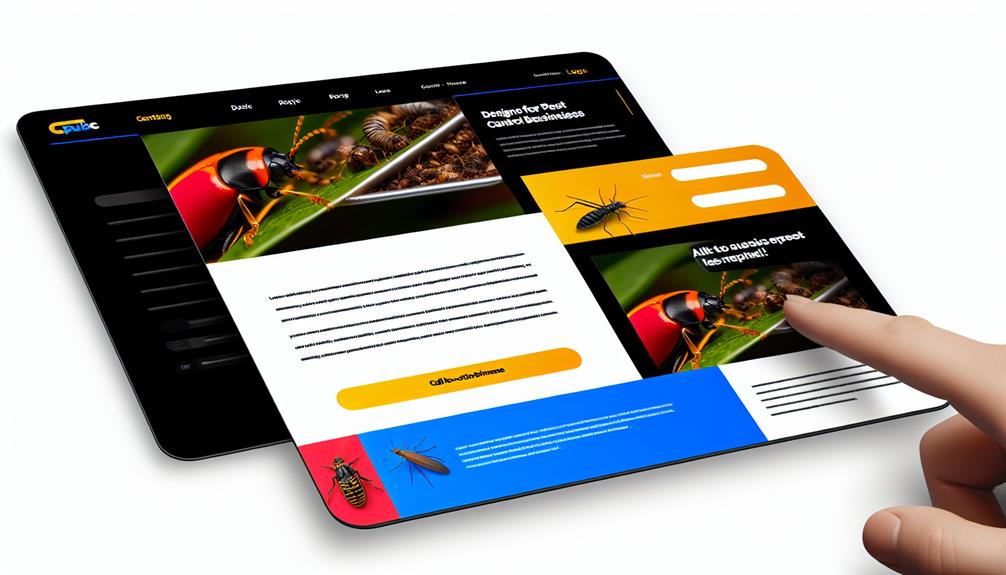Are you tired of your pest control email campaigns falling flat like a dead bug? Well, fear not, because we’ve got the top tips you need to buzz your way to success.
From building an engaged email list to analyzing campaign metrics, we’ve got you covered.
But before we delve into the nitty-gritty details, let’s start with the basics: crafting compelling subject lines that will have your recipients eagerly clicking to uncover what lies inside.
So, are you ready to take your pest control email marketing to new heights? Then keep reading, because we’re about to show you how.
Table of Contents
ToggleKey Takeaways
- Actively connect with your audience to build an engaged email list for pest control marketing.
- Craft compelling subject lines using action words, personalization, and a sense of urgency.
- Design eye-catching email templates that reflect your brand identity and incorporate visually appealing elements.
- Personalize content by segmenting your audience, utilizing dynamic content, and conducting A/B testing for maximum impact.
- Analyze campaign metrics such as open rates, click-through rates, and conversion rates to improve results and make necessary adjustments.
Building an Engaged Email List

To build an engaged email list, you need to actively connect with your audience and provide them with valuable content.
One crucial aspect of building an engaged email list is attracting subscribers who are genuinely interested in your pest control services. Instead of purchasing email lists or using questionable tactics, focus on organic methods to attract subscribers.
Offer a compelling reason for people to sign up, such as a free guide on pest prevention or exclusive discounts for subscribers. By providing value upfront, you can entice potential customers to join your email list.
Another important strategy for building an engaged email list is segmenting your audience. Not all subscribers have the same interests or needs.
By segmenting your email list, you can send targeted messages to specific groups of subscribers. For example, you can create segments based on the type of pests they’re dealing with or their geographical location.
This allows you to provide more personalized and relevant content, increasing the chances of engagement and conversion.
Crafting Compelling Subject Lines
Crafting compelling subject lines is essential for capturing the attention of your email subscribers and increasing the open rates of your pest control marketing campaigns. The subject line is the first thing your subscribers see when they receive your email, so it needs to be attention-grabbing and compelling.
Here are four tips to help you create subject lines that get your emails opened:
- Keep it short and specific: Your subject line should be concise and to the point. Avoid long, vague subject lines that leave your subscribers guessing. Instead, be clear and specific about what your email is about.
- Use action words: Incorporate strong, action-oriented words that encourage your subscribers to take action. Words like ‘discover,’ ‘learn,’ ‘save,’ or ‘get’ can evoke curiosity and entice your subscribers to open your email.
- Personalize it: Segmenting your email lists allows you to send targeted emails to specific groups of subscribers. Use this opportunity to personalize your subject lines by including the recipient’s name or location. Personalization can make your emails feel more relevant and increase open rates.
- Create a sense of urgency: By creating a sense of urgency in your subject lines, you can encourage your subscribers to take immediate action. Use phrases like ‘limited time offer,’ ‘last chance,’ or ‘expires soon’ to create a sense of urgency and drive opens.
Crafting compelling subject lines is crucial for grabbing the attention of your email subscribers and increasing open rates. By following these tips, you can create subject lines that captivate your audience and boost the success of your pest control marketing campaigns.
Designing Eye-catching Email Templates

Designing eye-catching email templates is an essential aspect of creating successful pest control marketing campaigns. When it comes to email marketing, first impressions matter. Your email template should capture the attention of your audience and entice them to take action. To achieve this, focus on creating effective call to actions and optimizing email deliverability.
To start, make sure your email template is visually appealing. Use a clean and professional design that reflects your brand identity. Incorporate eye-catching colors, images, and fonts that are easy to read. Also, consider using personalized elements, such as the recipient’s name, to make the email feel more personal and engaging.
Next, create a compelling call to action. Clearly state what action you want your audience to take and make it easy for them to do so. Use action-oriented language and include buttons or links that stand out. Additionally, consider using urgency or scarcity tactics to create a sense of FOMO (fear of missing out) and motivate your audience to act quickly.
Personalizing Content for Maximum Impact
When it comes to creating impactful pest control email marketing campaigns, personalizing your content is a crucial strategy that can significantly increase engagement and conversions. By tailoring your emails to the specific needs and interests of your recipients, you can grab their attention and make a lasting impression.
Here are four tips to help you personalize your content for maximum impact:
- Creating effective segmentation: Segmenting your email list based on factors such as location, behavior, or preferences allows you to send targeted messages to specific groups of people. This ensures that your content resonates with your audience and increases the chances of conversion.
- Implementing dynamic content: Dynamic content enables you to customize your emails based on individual recipient data. By including personalized recommendations, offers, or even just addressing your recipients by name, you can create a more personalized experience that encourages engagement.
- Utilizing past interactions: Take advantage of the data you have collected from previous interactions with your subscribers. Use this information to tailor your content, such as referencing their previous purchases or asking for feedback on their experience. This shows your customers that you value their input and are paying attention to their needs.
- A/B testing: Test different versions of your emails to see which content resonates best with your audience. By analyzing the results, you can refine your approach and deliver more personalized content that drives better results.
Analyzing Campaign Metrics and Improving Results

To improve the effectiveness of your pest control email marketing campaigns, it’s essential to analyze campaign metrics and make necessary adjustments for better results. Tracking the effectiveness of your email campaigns allows you to understand what’s working and what needs improvement. By analyzing metrics such as open rates, click-through rates, and conversion rates, you can gain valuable insights into the performance of your campaigns.
Start by tracking the open rates of your emails. This metric measures the percentage of recipients who open your emails. A low open rate may indicate that your subject lines aren’t compelling enough or that your emails are being sent at the wrong time. Experiment with different subject lines and send times to optimize your open rates.
Next, analyze the click-through rates of your emails. This metric measures the percentage of recipients who click on links within your emails. A low click-through rate may indicate that your content isn’t engaging enough or that your call to action isn’t clear. Test different types of content and optimize your call to action to improve click-through rates.





